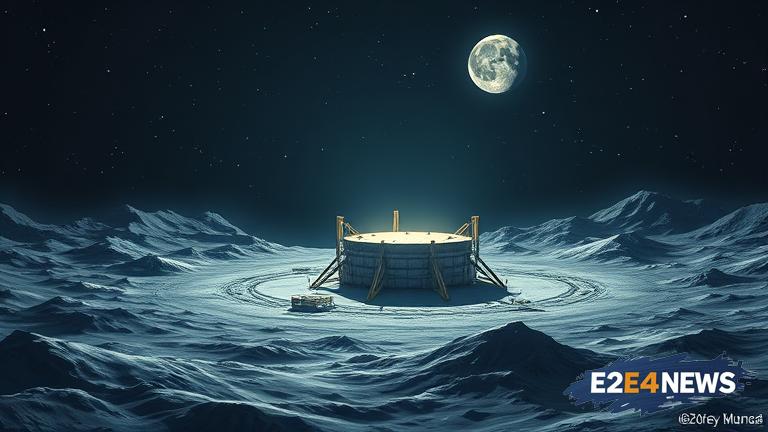NASA has announced an ambitious plan to build a 100-kilowatt nuclear reactor on the moon by 2030, outpacing China and Russia’s lunar ambitions. The reactor, which will provide a reliable and constant source of power, is a crucial step towards establishing a sustainable human presence on the lunar surface. The project, dubbed the Kilopower project, aims to develop a compact and efficient nuclear reactor that can be transported to the moon and assembled on site. The reactor will be capable of generating 100 kilowatts of electricity, enough to power a small village or a lunar base. NASA’s plan is to use the reactor to power a lunar base that will serve as a hub for scientific research, exploration, and development of the moon’s resources. The lunar base will also provide a stepping stone for further human exploration of the solar system. China and Russia have also announced plans to establish a human presence on the moon, but NASA’s plan is more ambitious and aims to establish a sustainable presence on the lunar surface. The Kilopower project is a collaboration between NASA, the Department of Energy, and private industry partners. The project has already completed several successful tests, including a full-power test of the reactor in 2018. The next step is to conduct a series of tests to demonstrate the reactor’s ability to operate in a lunar environment. NASA plans to send the first components of the reactor to the moon in the late 2020s, with the goal of having the reactor operational by 2030. The lunar reactor will be powered by uranium fuel and will use a closed-loop cooling system to minimize waste and maximize efficiency. The reactor will also be designed to be highly reliable and fault-tolerant, with multiple redundancies and backup systems. The Kilopower project has the potential to revolutionize the way we explore and develop space, providing a reliable and constant source of power for a wide range of applications. The project also has significant implications for the development of nuclear power on Earth, as it will demonstrate the feasibility of small, compact nuclear reactors for a wide range of applications. NASA’s plan to build a lunar reactor is a major step forward in the development of space-based nuclear power, and it has the potential to pave the way for a new era of space exploration and development. The project is also expected to create new opportunities for scientific research and discovery, as well as for the development of new technologies and industries. The lunar reactor will provide a unique opportunity for scientists to conduct research in a low-gravity, radiation-rich environment, and it will also provide a platform for the development of new technologies and industries, such as lunar mining and manufacturing. The Kilopower project is a testament to NASA’s commitment to pushing the boundaries of space exploration and development, and it has the potential to inspire a new generation of scientists, engineers, and explorers. The project is also a reminder of the importance of international cooperation and collaboration in the pursuit of space exploration and development. As NASA moves forward with the Kilopower project, it will be working closely with its international partners to ensure that the benefits of the project are shared widely and that the project contributes to the advancement of human knowledge and understanding. The lunar reactor is a major step forward in the development of space-based nuclear power, and it has the potential to pave the way for a new era of space exploration and development. The project is a reminder that space exploration and development are a global endeavor, and that international cooperation and collaboration are essential for achieving our goals in space. The Kilopower project is a shining example of what can be achieved through determination, hard work, and a commitment to pushing the boundaries of what is possible. As we look to the future, it is clear that the Kilopower project will play a major role in shaping the course of space exploration and development, and it will inspire new generations of scientists, engineers, and explorers to pursue careers in these fields.





